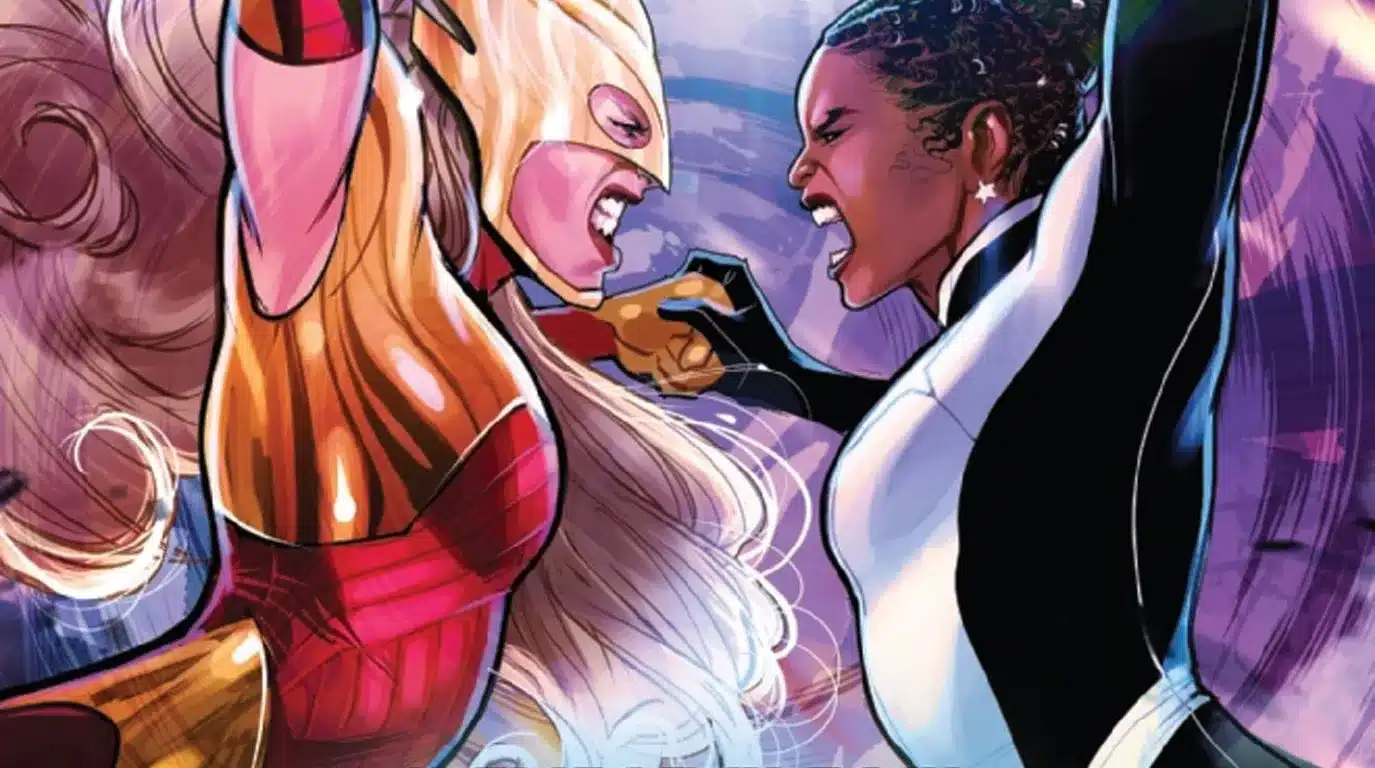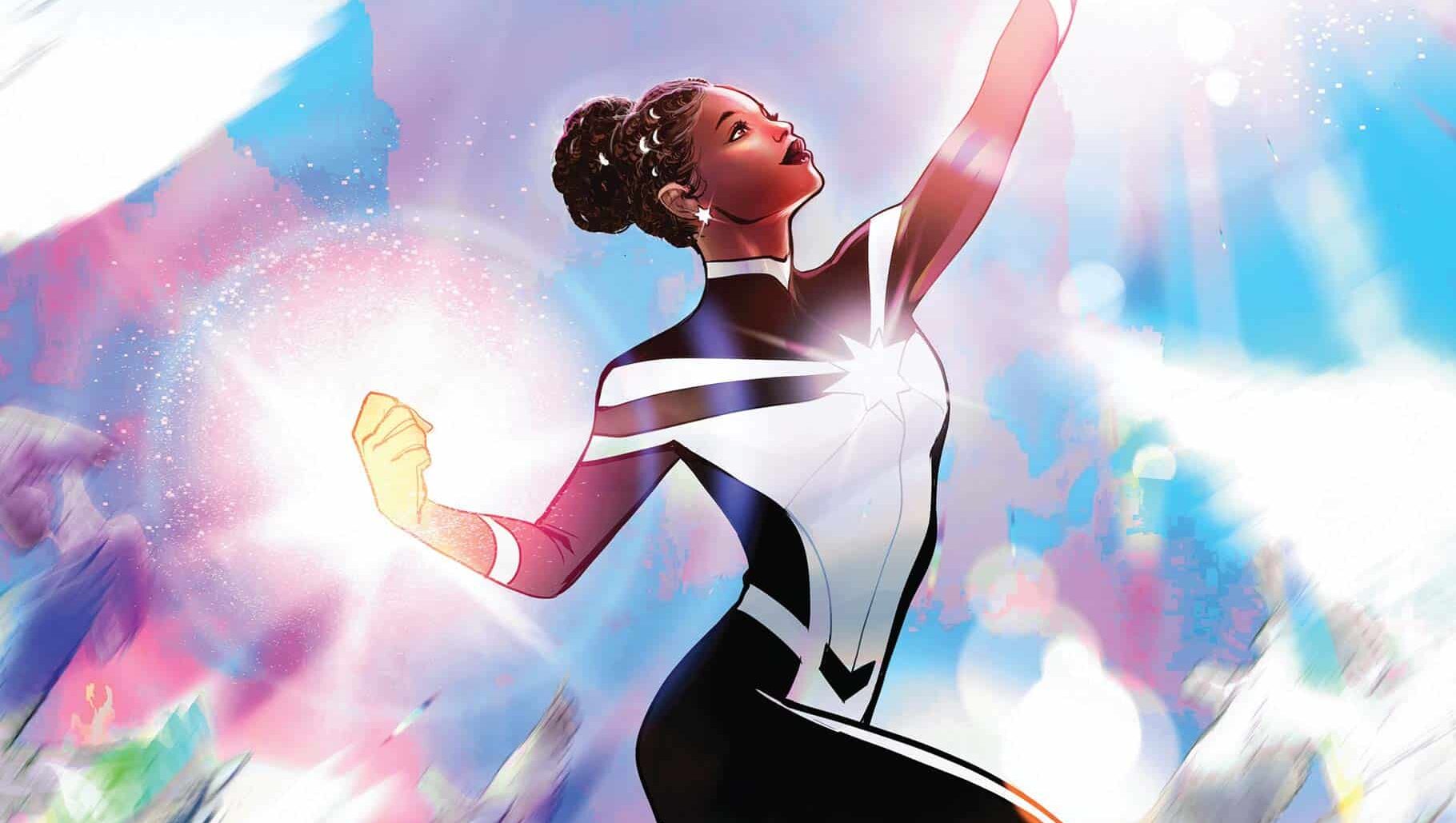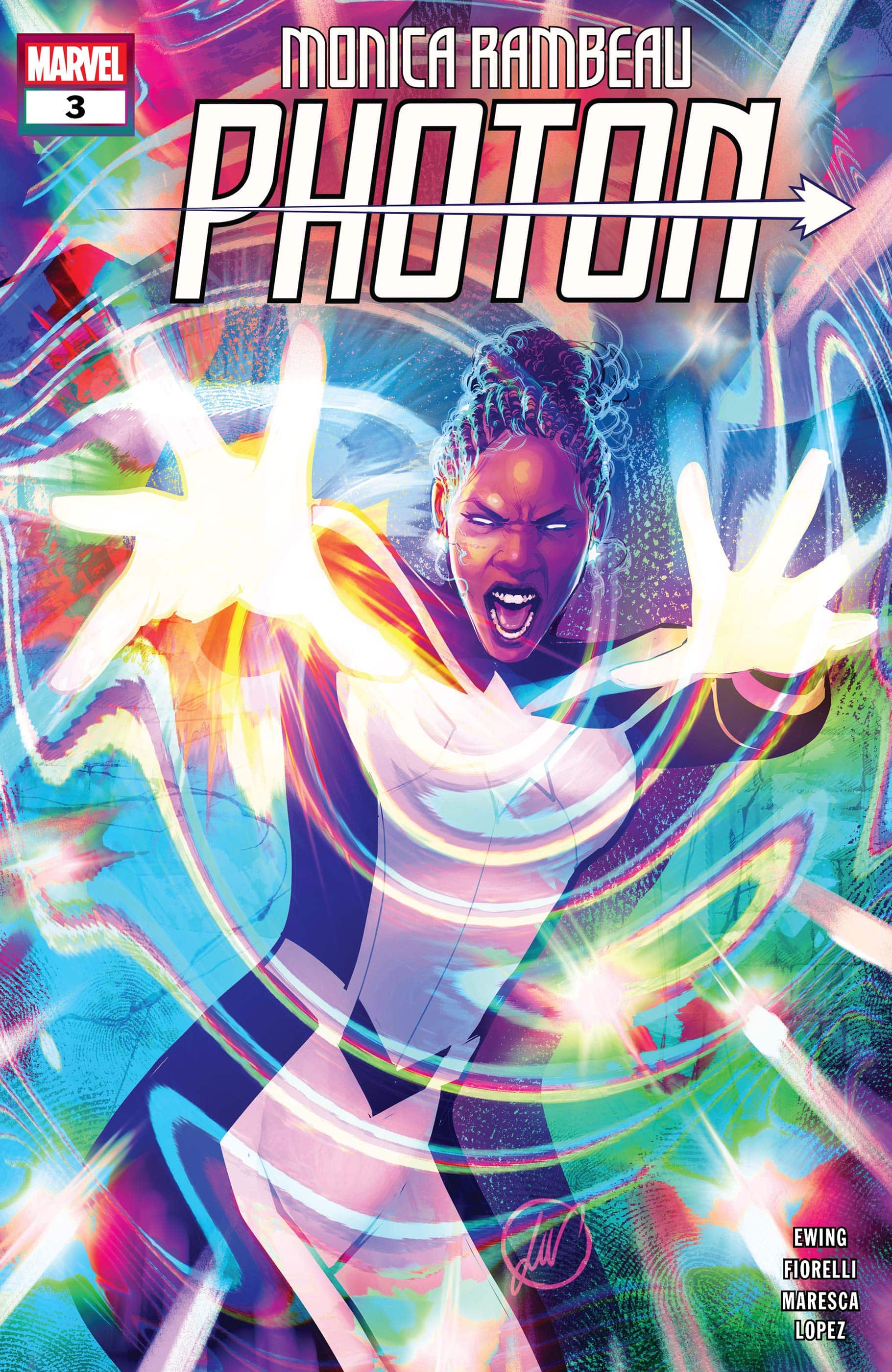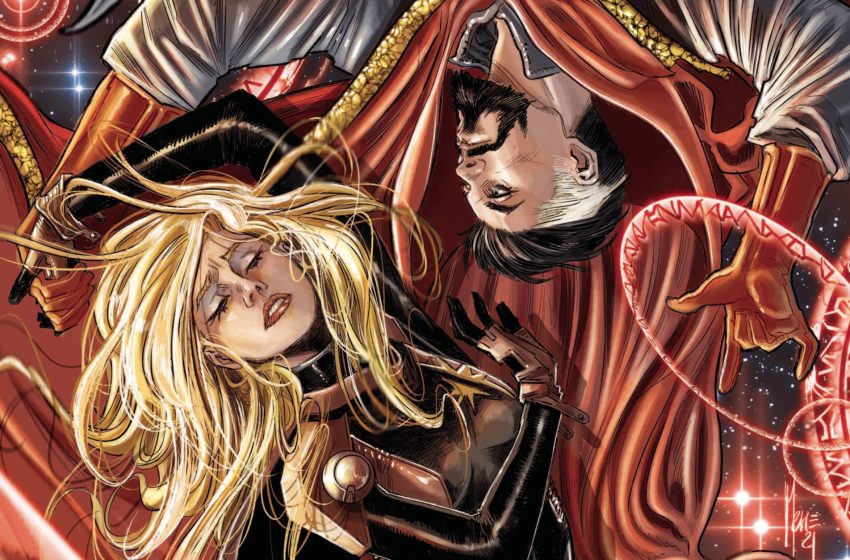With nowhere left to turn and the universe crumbling around her, Monica must look to an unexpected source to find answers – or life as she knows it will be gone forever! And as the journey continues, so do the revelations about Monica’s past…for better or for worse. Monica Rambeau: Photon #4 is written by Eve L. Ewing, drawn by Luca Maresca, colored by Carlos Lopez and lettered by VC’s Clayton Cowles.
The issue begins with Monica being confronted by Dr. Karla “Moonstone” Sofen and her colleague Dr. Yesenia Rosario at the Ravencroft Institute. The former has told Monica that she broke the universe and asks that Monica give them a chance to explain things.
Upon entering the building, Monica spots the Stone of Hala that she came to get. Dr. Rosario and Moonstone explain that they’ve been studying the stone and other things as part of the “Ravencroft Interreality Project” aka R.I.P.
If you think that the two doctors should’ve chosen a different name, Monica thinks so too. Ewing once again displays a fun sense of humor with her dialogue as Monica says, “R.I.P.? Nobody thought that through?” and Moonstone says that funders wanted something “punchy.”
Besides the Stone of Hala, another thing the two doctors are studying is Monica Rambeau herself, via a new project called “The Rambeau Event.” To put it simply, Monica Rambeau’s internal crisis is affecting her powers, resulting in a broken reality.
In my previous reviews, I suggested that Rambeau’s internal crisis is causing her to teleport to different versions of her life. Since Monica isn’t sure of her worth outside of being a superhero, her fractured sense of self is literally fracturing reality.
Of course, Monica doesn’t want to hear it. She just wants to take the Stone of Hala and leave, but Moonstone tries to use her powers to force Monica to stay. However, Dr. Rosario changes into her supersuit form and stops her. Even so, Moonstone still gives chase to Monica, resulting in a good fight.
Once again, Carlos Lopez and Clayton Cowles make Monica and Moonstone’s powers shine with colors and lettering. I like seeing the notable difference between Monica’s photon blasts, Moonstone’s blasts and Monica’s infrared blast that finally let her escape from the doctors.
Before Monica can fly back to The Charans, she finds that they are gone. They left a message saying that they decided to relocate and that the Stone of Hala is just representing a larger issue, which is implied to be Monica herself.
The page that follows this features beautiful artwork from Luca Maresca that shows Monica in a more vulnerable light, curled into a ball and crying in the middle of space. Ewing’s writing shines here too as Monica laments how tired she is, but how she can’t afford to take a break to figure herself out.
As I mentioned in issue 1, Monica is feeling the pressure that almost every Black woman feels, to be a superhero to everyone at the expense of their own needs.
Resigned, Monica teleports again and ends up in the apartment of the adult version of her cousin Caleb. However, this Caleb is doing better than the one Monica remembers. He’s a stay-at-home dad who is amicable enough that Monica can confide in him about her situation.
Caleb says that Monica needs to figure out what she wants in order to fix the issue with her powers, but Monica can’t see past other people’s perception of her. At this point, I believe Monica needs some time alone to get herself together without the distractions of superheroes and villains.
After receiving a bracelet of cowry shells from Caleb said to provide good energy, Monica is shocked to see that Caleb’s twins have literally grown from babies to children within minutes. Thinking that her reality is shifting again, Monica calls on The Beyonder to try and sort things out once and for all.
The Beyonder explains that she was drawn to Monica back when she was a child. At that time, Monica’s mother was under a lot of stress due to being passed over for an important position at work. Angry yet resilient, Monica’s mother says, “We don’t abide by quitters in this house. The world won’t show us any favor, so we put our nose to the grindstone.”
It is said that Black women have to work twice as hard, in order to get half as much as everyone else gets. All too often, this saying has been proven true in areas such as sports, music and more. As a result of misogynoir, Black women put too much pressure on themselves to meet the high standards of a society that wasn’t built for them. When young Black girls start to emulate this, this results in a cycle that perpetuates trauma, neglect and self-loathing. This is the case with Monica’s mother and Monica herself.
Later that night, the child version of Monica goes to bed and displays signs of her superpowers, but ends up suppressing them until she was shocked by extra-dimensional energy as an adult and became Captain Marvel. It is heartbreaking that Monica felt that she had to hide her abilities up until that point.
After shedding some tears, Monica says that her past doesn’t matter because she needs to figure out who she is now. I disagree, because as the saying goes, “You can’t know where you’re going until you know where you’ve been.” Monica needs to know that her powers were never anything to be ashamed of and that she is more than what they made her.
Maybe Monica will finally realize this in the next issue. Issue 4 ends as a huge ship belonging to Starfox aka Eros, Thanos’ brother, pulls up to Monica and The Beyonder. Let’s hope he doesn’t cause any trouble for Monica.

Latonya Pennington
Latonya Pennington is a freelance contributor whose comics criticism can be found at Women Write About Comics, Comic Book Herald, Newsarama and Shelfdust, among others.





